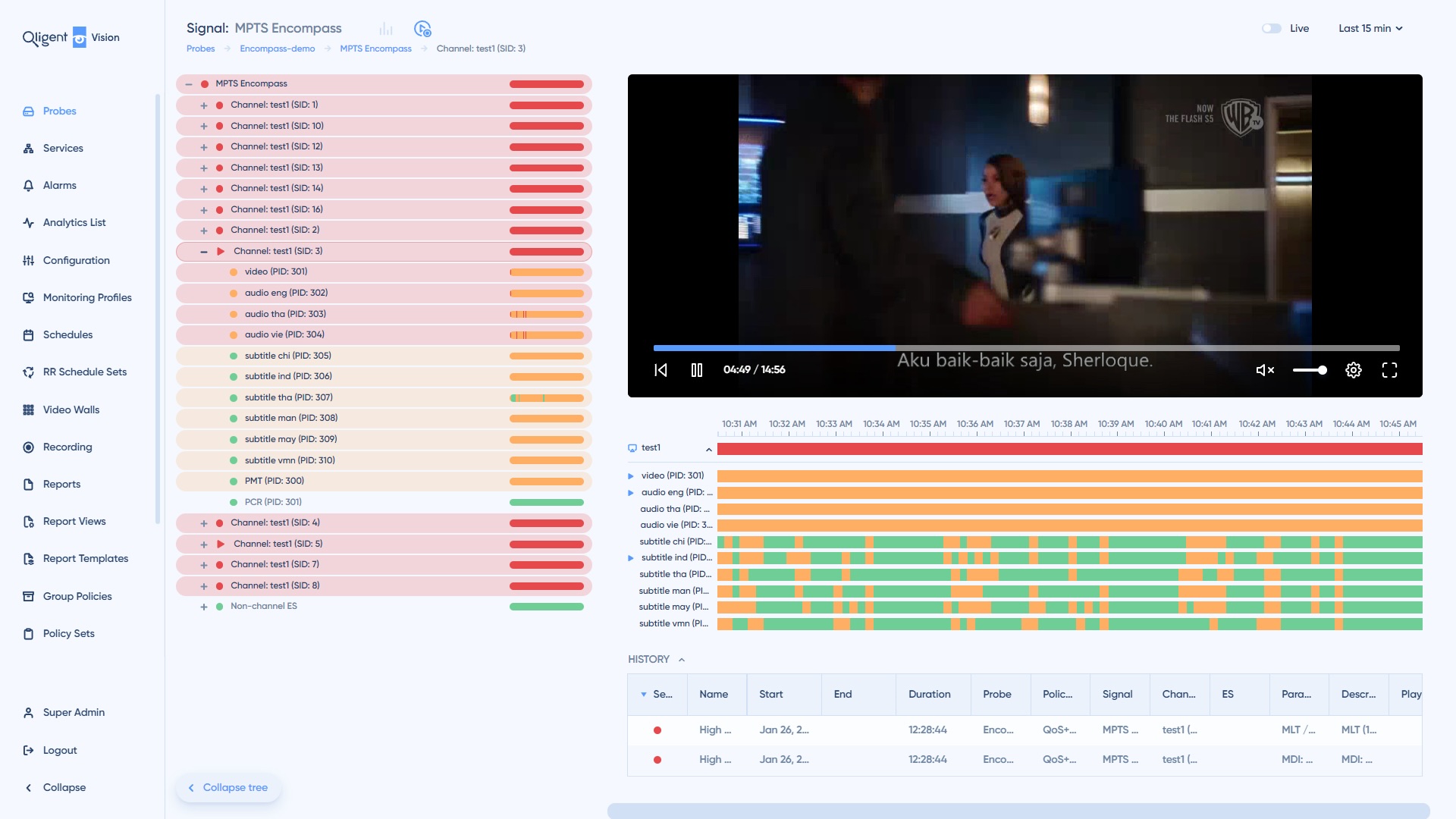Qligent Expands Sinclair Deployment to Include ATSC 3.0 Monitoring
Qligent’s software-defined Vision architecture supports ATSC 1.0 and ATSC 3.0 monitoring on-premises and in the cloud

MELBOURNE, Fla.—Three years into a successful enterprise-wide rollout of Qligent’s Vision, Sinclair Broadcast Group is expanding the deployment by applying Qligent’s QoS, QoE and compliance monitoring toolsets to its growing network of ATSC 3.0 digital TV channels and services.
Sinclair Broadcast Group has already deployed Qligent’s Vision ATSC 3.0 solution in 14 markets and 28 channels where the media company offers live ATSC 3.0 broadcasts. In the future, the rollout will expand across all Sinclair markets as they launch new ATSC 3.0 channels and services.
“Qligent’s approach ensures that we can build on our existing tools without requiring a wholesale program change to execute,” said Mike Kralec, senior vice president and CTO, at the Sinclair Broadcast Group. “We have an ATSC 3.0 monitoring system that looks very similar to our ATSC 1.0 system, which minimizes disruption. It’s a very efficient way to achieve greater visibility into our ATSC 3.0 system while also minimizing new capital expenditures.”
Vision ATSC 3.0 provides broadcasters with an intuitive workflow to monitor and analyze ATSC 3.0 data from the origination point forward. Its software helps broadcasters visualize and optimize multi-layer data streams and several data points associated with vendor equipment throughout the ATSC 3.0 ecosystem. Qligent provides users with multiple perspectives of compatibility and health of the ATSC 3.0 signal path, with all pertinent details centralized to a dashboard where users absorb overall performance, the company reported.
Current Qligent Vision installations require only a licensed software update to activate Vision ATSC 3.0 in the same system, adding support for ATSC 3.0 standards content formats and typically without scaling the existing installation. Qligent Vision ATSC3 is also available as a standalone installation that can be added to customer servers for new installations or in parallel with existing software. Operators can then cost-efficiently monitor and analyze QoS, QoE and compliance for ATSC 1.0, ATSC 3.0, and OTT signals both on-premises and in the cloud through a common Vision dashboard, the company said.
Sinclair Broadcast Group will leverage the depth and scale of their enterprise Vision system in Vision ATSC 3.0 to optimize both ATSC 1.0 and ATSC 3.0 performance through a single pane of glass approach, the companies said.
This will provide Sinclair with a unified view of all content delivery across markets and channels. The ability to observe, record, and analyze all signals in a single system will allow Sinclair to operate more efficiently by leveraging common monitor-by-exception rulesets, with the ability for users to quickly identify and resolve any content delivery issues that occur in their live environments. In addition, using one unified enterprise platform across all delivery standards means less training, simplified root cause analysis, and faster time to resolution, Qligent reported.
Get the TV Tech Newsletter
The professional video industry's #1 source for news, trends and product and tech information. Sign up below.
Like Sinclair’s enterprise Vision solution, the Vision ATSC 3.0 configuration at Sinclair provides consolidated and distributed access to address varied needs across the organization. That includes enterprise-wide access from Sinclair’s network operations center, and local station access for regional engineers.
Moving forward, both Qligent and Sinclair Broadcast Group said they anticipate extending Vision’s reach deeper into Sinclair’s on-prem and cloud ecosystems.
“ATSC 3.0 efficiently enables a higher-density network of TV channels and services supported through datacasting,” said Brick Eksten, CEO, Qligent. “Vision ATSC 3.0 will provide Sinclair Broadcast Group with the monitoring and analysis capabilities they need for local ATSC 3.0 transmission networks as their content encryption and datacasting requirements grow.” Eksten adds that Vision ATSC 3.0 will support all QoS, QoE and compliance monitoring for Sinclair’s channels delivered to viewers.
“Vision helps us optimize content presentation for our diginets while making it easier to manage unique channels in markets where we do news and local ad insertions,” added Kralec. “As we send more file-based information through our ATSC 3.0 ecosystem, Vision ATSC 3.0 gives us a foundation to do much more with our monitoring infrastructure.”
George Winslow is the senior content producer for TV Tech. He has written about the television, media and technology industries for nearly 30 years for such publications as Broadcasting & Cable, Multichannel News and TV Tech. Over the years, he has edited a number of magazines, including Multichannel News International and World Screen, and moderated panels at such major industry events as NAB and MIP TV. He has published two books and dozens of encyclopedia articles on such subjects as the media, New York City history and economics.

